- Joined
- Nov 12, 2019
- Messages
- 19
- Reaction score
- 12
Follow along with the video below to see how to install our site as a web app on your home screen.
Note: This feature may not be available in some browsers.
No, thank you guys for posting really good info to advance the hobby.Extremely fast airplane pilotthank you for posting! That brings to mind the few times Taricha and Dr. Reef said they rec’d dead bottles for testing
and on the flip side one of our first links from page one was just like that and still passed adjusted testing
now that you have given the ideal time for Dr Tim’s to work and coat surfaces it’s hard to imagine zero ability of surfaces, is this cycling tank too large to do the adjusted test/ hope it’s not a hundred gallon system
it would be neat to get the suspect tank changed out for known safe water, benchmark the readings again for proofing now that biofilms are available on surfaces, and re dose that api back to barely green vs deep green, aka the calibrated test (the lowest increment of change up from the calibrated zero reset, so we can clearly see if it moves down by tomorrow)
you’ve also got time on your side, this duration you mention is 90% the time required from a cycling chart for ammonia control as well, plus it’s been fed and boosted unless the bottle was doornail dead…very rare evens
curious how hard it would be to change out the water now?
those tests have a lag time that digital tests don’t have. I like this realignment scheme because it brings down sensitive levels to a degree we can see better, across titration kits. * also possible if tank is big* remove a bunch of those sitting rocks, place in five gallon bucket of clean swater and proof it all at that dilution.
I can’t see why working with smaller dilutions and high relative surface area wouldn’t reveal action or inaction from the suspect rocks to be verified?
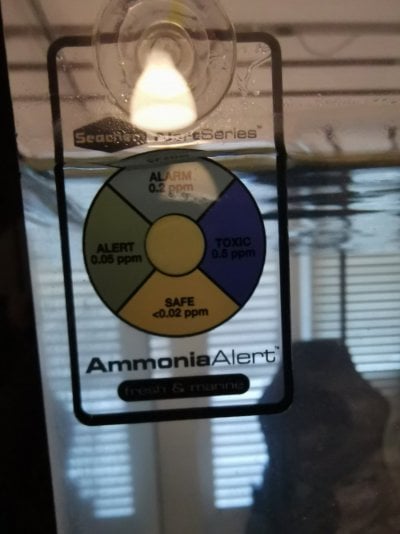
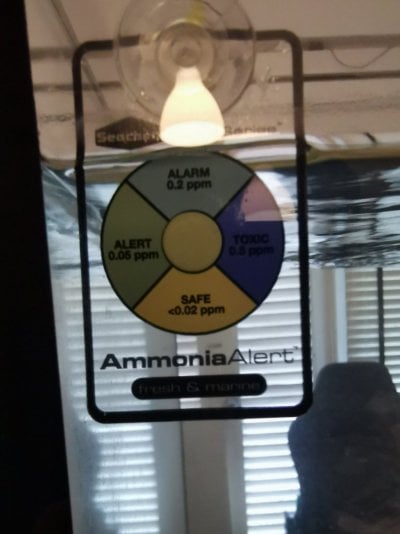
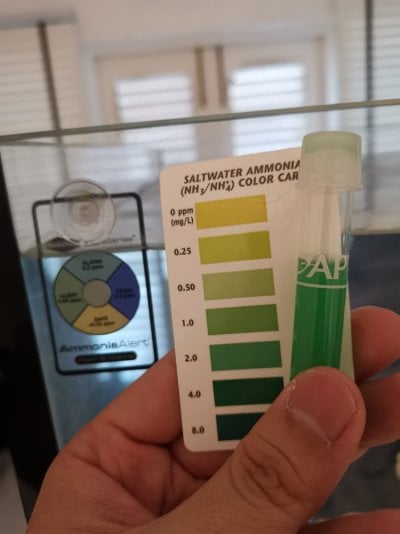
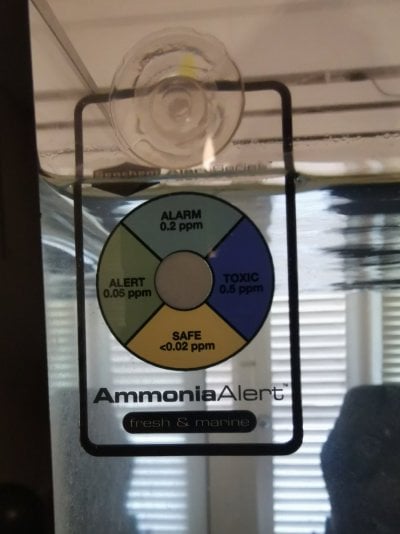
Interesting. So possibly free ammonia or nh3 is low while nh4 is high. And the titration kits boost ph which converts nh4 into nh3 and hence the super high reading.Badge is free ammonia, API is total ammonia. Different animals which vary depending on largely pH, but other factors as temperature.
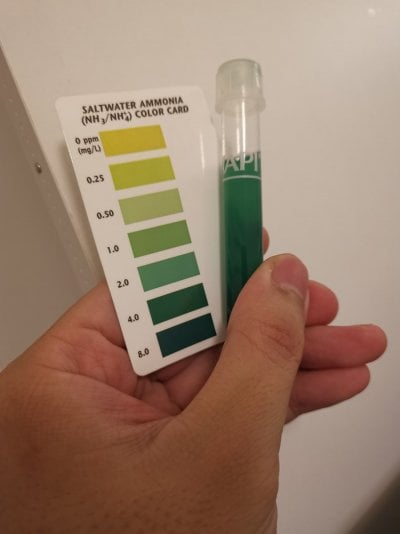
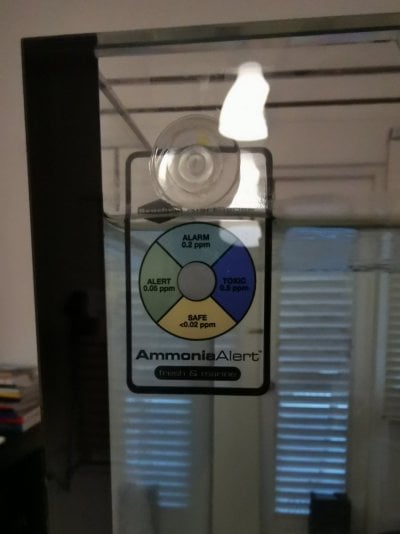

Tank cycling
I've just setup a 100gallon tank and has been cycling for about 5 weeks...ive been testing and everything seemed fine .... But now I'm only getting ammonia reading at about 0.50 and not seeing any nitrite or nitrate...is my tank cycled??www.nano-reef.com
Look how bad nano-reef.com needs our thread here. Anyone with a dual membership, link us to them for cross site study and testing. I bet if he adds life right now, it lives as our pages show. that's typical no TAN api test kit evaluation the peers who are telling him he's not cycled are doing
Dan_P explained TAN conversions to me not long ago and that's helped discern the nature of these false stuck cycle threads.
I dont post there but rtr and nr.com are friendly forums, nobody from either site minds cross linking. Id be curious to see if they consider, or instantly disregard our fifteen pages of cycles that directly match that one above and are now solved.
after TAN conversion on the stated ranges above. those tanks are starting at 2ppm free ammonia and moving down to .05 or .025, a massive movement that only a cycled tank can run. on seneye they'd never have this concern as of 4 weeks ago
They had him buy more bottled bac, and still told him it wasnt ready.
show them this post and we can do a cross forum analysis.
Interesting. So possibly free ammonia or nh3 is low while nh4 is high. And the titration kits boost ph which converts nh4 into nh3 and hence the super high reading.
Now the question is, by adding nh4cl, how much turns to toxic nh3 and how much become nh4.
@Randy Holmes-Farley thoughts?

Interesting. So possibly free ammonia or nh3 is low while nh4 is high. And the titration kits boost ph which converts nh4 into nh3 and hence the super high reading.
Now the question is, by adding nh4cl, how much turns to toxic nh3 and how much become nh4.
@Randy Holmes-Farley thoughts?

 www.reef2reef.com
www.reef2reef.com
Thanks @Randy Holmes-Farley, your article really helped and it also matches the ratio in my tank. Measured pH and its at 7.9 and that's close to a 5:95 ratio.The fraction of each form depends only on pH:
Ammonia and the Reef Aquarium by Randy Holmes-Farley - Reefkeeping.com


